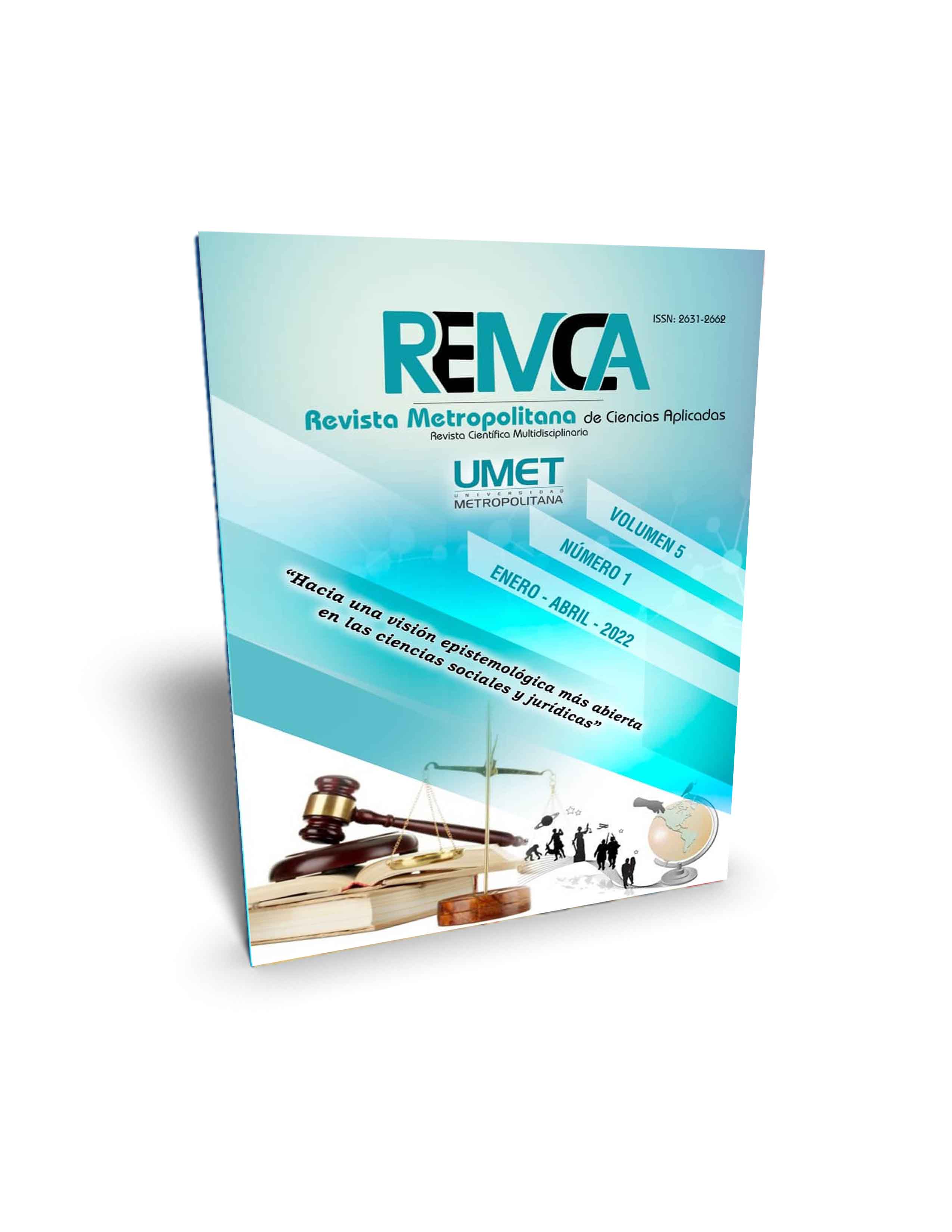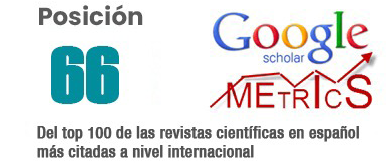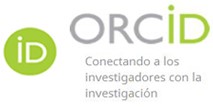The use of the flipped classroom for dynamic and participatory learning
DOI:
https://doi.org/10.62452/bvg8ws72Keywords:
Inverted classroom, education, teaching, ICT, studentsAbstract
The flipped classroom is a new way of developing cognitive learning, helping students to become the protagonists of their own learning, this work proposal has a support with theoretical bases of connectivism, this teaching is carried out with the help of ICTs , that is, education is presented with a new proposal to teach and learn, cooperates with the development of education, this work is based on the search for information that supports the objective of identifying the importance of the use of the flipped classroom for the achievement of the dynamic and participatory learning in students, this new educational model has shown that students improve their learning by helping them get out of the routine of traditional classes.
Downloads
References
Aguilera-Ruiz, C., Manzano-León, A., Martínez-Moreno, I., Lozano-Segura, M. C., & Casiano Yanicelli, C. (2017). El modelo Flipped Classroom. Revista INFAD De Psicología. International Journal of Developmental and Educational Psycholo-gy., 4(1), 261–266.
Archbold, F. (2019). Aula invertida: Análisis de una experiencia disruptiva en la práctica de enseñanza y aprendizaje desde la mirada docente. (Tesis de gra-do). Pontificia Universidad Javeriana.
Avello Martínez, R., & Duart, J. M. (2016). Nuevas tendencias de aprendizaje colabo-rativo en e-learning: Claves para su implementación efectiva. Estudios peda-gógicos (Valdivia), 42(1), 271-282.
Bejar, M. (2020). Flipped Classroom y aprendizaje de las funciones trigonométricas en el primer año de bachillerato en el colegio de alto rendimiento Puno. (Te-sis de maestría). Universidad Nacional del Altiplano.
Espinoza, L., & Araya, A. (2019). Clase invertida y aprendizaje cooperativo en post-grado: una experiencia en Chile. Educere, 23(75), 477-486.
Flores Cuevas, F. (2018). La formación pedagógica y el uso de las tecnologías de la información y comunicación dentro del proceso enseñanza aprendizaje como una propuesta para mejorar su actividad docente. EDMETIC, 7(1), 151-173.
Flores, L., & Veytia, M., & Moreno, J. (2020). Clase invertida para el desarrollo de la competencia: uso de la tecnología en estudiantes de preparatoria. Revista Educación, 44(1), 1-30.
Galindo, J., & Badillo. M. (2016). Innovación docente a través de la metodología Flip-ped Classroom: Percepción de docentes y estudiantes de educación secunda-ria innovación docente a través de la metodología Flipped Classroom, Didas-calia: Didáctica y educación, 7(6), 153-172.
Garrote Rojas, D., Arenas Castillejo, J. A., & Jiménez Fernández, S. (2018). Las TIC como herramientas para el desarrollo de la competencia intercultural. EDME-TIC, Revista de Educación Mediática y TIC, 7(2), 166-183.
Herrera, G., & Prendes, M. (2019). Implementación y análisis del método de aula invertida: un estudio de caso de Bachillerato, INNOEDUCA, 5(1), 24-33.
Jaime, E. (2020), Límites y alcances del aula invertida como estrategia didáctica. Análisis documental. (Tesis de Especialización en Educación).Universidad Pe-dagógica Nacional.
Lamas, M., & Lalueza, J. L. (2016). Innovar en el aula: Contradicciones entre nuevas herramientas y viejos roles como medio para trasformar la práctica. Estudios pedagógicos (Valdivia), 42(3), 243-258.
Martínez-Salas, M. (2019). El modelo pedagógico de clase invertida para mejorar el aprendizaje del idioma inglés. Investigación Valdizana, 13(4), 204-213.
Montero, M., & Marmolejo, T. (2020). El aula invertida como estrategia para el aprendizaje de las Matemáticas en segundo año de E.G.B. Revista Roca, 16, 415-425.
Perdomo, W. (2016). Estudio de evidencias de aprendizaje significativo en un aula bajo el modelo Flipped Classroom. Edutec. Revista Electrónica De Tecnología Educativa, (55).
Reynosa Navarro, E., Urbina Ganvini, E. L., De La Torre Zavala, S. D., Niño Becerra, L. M., Orbegoso Dávila, A. M., Saldaña Bernal, C. K., Cruz Rosas, J. (2020). Integral Characteristics of the Entrepreneurial Leader: A Pedagogical Experi-ence. Journal of Entrepreneurship Education, 23(5), 1-11.
Salas-Rueda, R. A., & Salas-Silis, J. A. (2018). Simulador Logic.ly ¿Herramienta tec-nológica para facilitar el proceso enseñanza-aprendizaje sobre las Matemáti-cas? Revista Dilemas Contemporáneos: Educación, Política y Valores, 5(3), 1-25.
Sánchez-Cabrero, R., Costa-Román, O., Mañoso-Pacheco, L., Novillo-López, M., & Pericacho-Gómez, F. (2019a). Orígenes del conectivismo como nuevo para-digma del aprendizaje en la era digital. Educación Y Humanismo, 21(36), 113-136.
Sánchez-Cruzado, C., Sánchez-Compaña, M. T., & Ruiz, J. (2019b). Experiencias reales de aula invertida como estrategia Metodológica en la Educación Univer-sitaria española. Publicaciones, 49(2), 39-58.
Downloads
Published
Issue
Section
License
Copyright (c) 2022 Patricia Laura Carrasco Corpus (Autor/a)

This work is licensed under a Creative Commons Attribution-NonCommercial-ShareAlike 4.0 International License.
Authors who publish in Revista Metropolitana de Ciencias Aplicadas (REMCA), agree to the following terms:
1. Copyright
Authors retain unrestricted copyright to their work. Authors grant the journal the right of first publication. To this end, they assign the journal non-exclusive exploitation rights (reproduction, distribution, public communication, and transformation). Authors may enter into additional agreements for the non-exclusive distribution of the version of the work published in the journal, provided that acknowledgment of its initial publication in this journal is given.
© The authors.
2. License
The articles are published in the journal under the Creative Commons Attribution-NonCommercial-ShareAlike 4.0 International License (CC BY-NC-SA 4.0). The terms can be found at: https://creativecommons.org/licenses/by-nc-sa/4.0/deed.en
This license allows:
- Sharing: Copying and redistributing the material in any medium or format.
- Adapting: Remixing, transforming, and building upon the material.
Under the following terms:
- Attribution: You must give appropriate credit, provide a link to the license, and indicate if any changes were made. You may do this in any reasonable manner, but not in any way that suggests the licensor endorses or sponsors your use.
- NonCommercial: You may not use the material for commercial purposes.
- ShareAlike: If you remix, transform, or build upon the material, you must distribute your creation under the same license as the original work.
There are no additional restrictions. You may not apply legal terms or technological measures that legally restrict others from doing anything the license permits.




